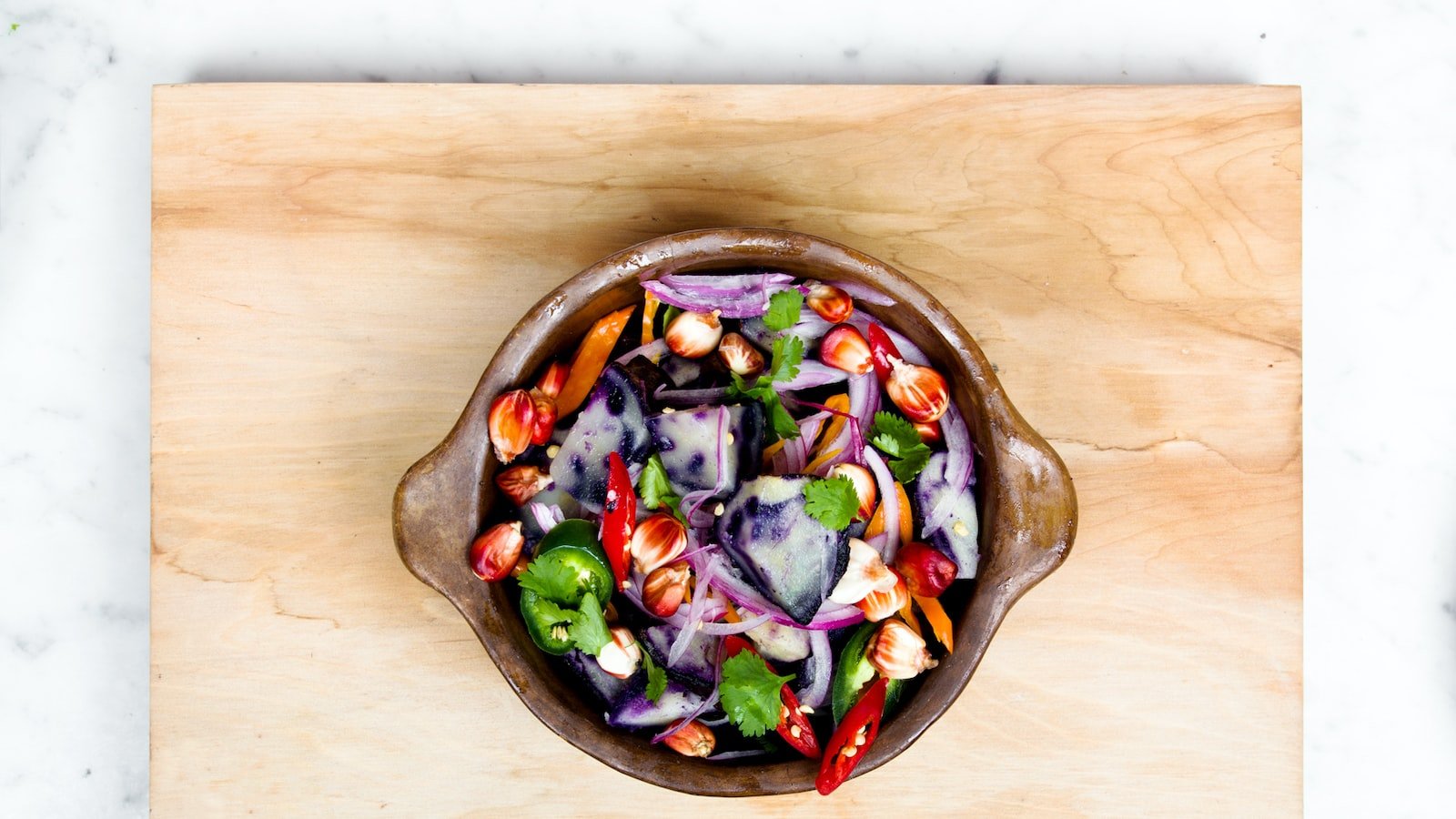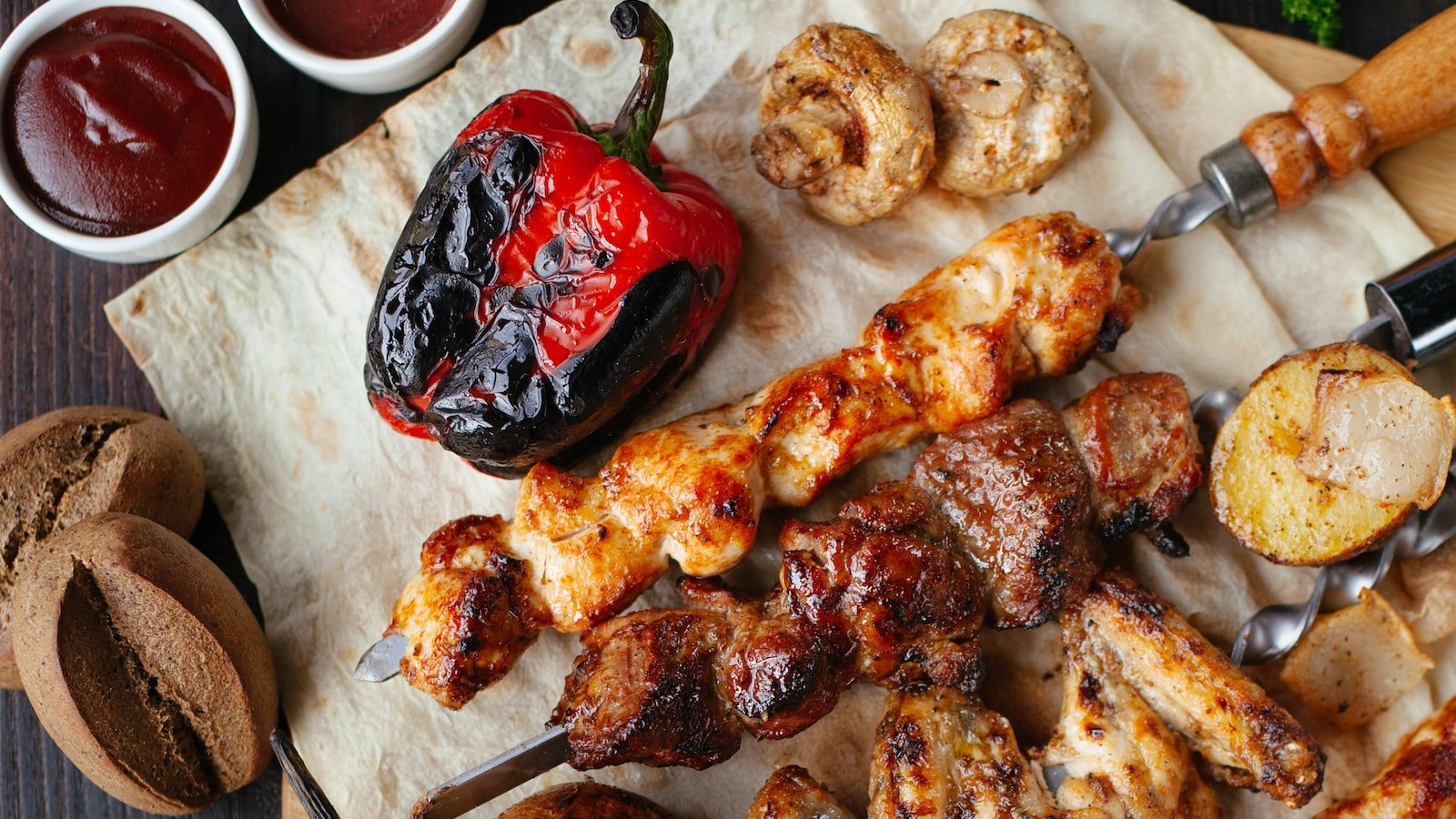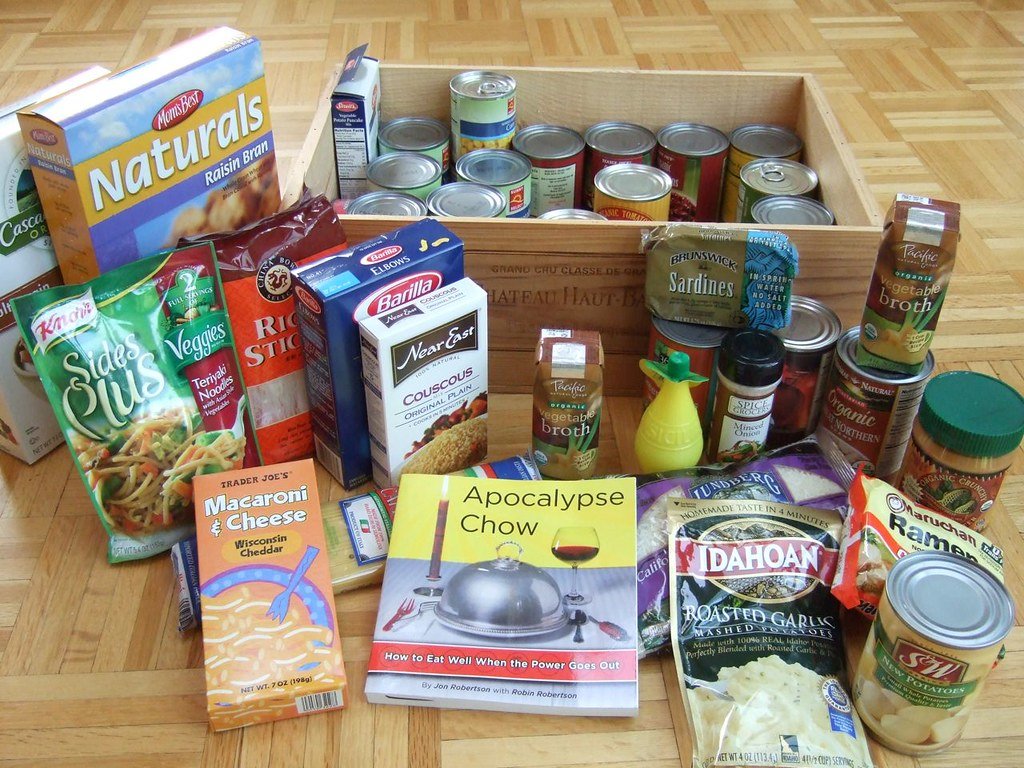Now Reading: The Best Off-Grid Food Storage Solutions
-
01
The Best Off-Grid Food Storage Solutions

The Best Off-Grid Food Storage Solutions
There’s an enigmatic allure to living off the grid, where independence thrives and self-sufficiency reigns supreme. From cozy cabins nestled in remote corners of the world to resilient households preparing for unforeseen circumstances, off-grid living has become a captivating lifestyle choice for many. But when it comes to ensuring an uninterrupted food supply, embracing innovative and reliable storage solutions becomes paramount. In this exploration of the best off-grid food storage solutions, we embark on a culinary journey where traditional wisdom and technological advancements intertwine. Join us as we unlock the secrets behind preserving nature’s bounties, safeguarding against scarcity, and embracing a world where sustainability meets flavor.
Table of Contents
- Food Storage Solutions for Off-Grid Living: Ensuring Long-Term Sustainability
- Choosing the Right Containers: Durable and Compact Options for Off-Grid Food Storage
- Preserving Fresh Produce: Effective Methods for Prolonging Shelf Life in Off-Grid Environments
- Alternative Techniques: Innovative Approaches to Off-Grid Food Storage
- Navigating Off-Grid Challenges: Practical Recommendations for Reliable and Efficient Food Preservation
- Q&A
- Key Takeaways

Food Storage Solutions for Off-Grid Living: Ensuring Long-Term Sustainability
When it comes to off-grid living, having a reliable food storage system is essential for ensuring long-term sustainability. With limited access to grocery stores and the need to rely on self-sufficiency, strategic planning and innovative solutions are key. Here are some creative food storage ideas to maximize efficiency and make the most out of your off-grid lifestyle:
- Root Cellar: Consider building a root cellar, a traditional method of storing fruits and vegetables that provides cool, dark, and well-ventilated conditions. This natural food storage solution helps extend the shelf life of your produce, allowing you to enjoy fresh, homegrown produce long after harvest.
- Canning: Preserve the abundance of your garden harvest by canning fruits, vegetables, and even meats. Properly sterilized and sealed jars can achieve remarkable longevity, ensuring you have nutritious and flavorful food year-round. Don’t forget to label your jars with contents and dates for easy organization.
- Dehydration: Dehydrating food is an excellent way to reduce moisture content and increase storage life. Invest in a food dehydrator to dry fruits, vegetables, and herbs. This not only helps you save space but also concentrates flavors and nutrients, making for a delicious addition to your off-grid pantry.
Remember, your off-grid food storage solutions should prioritize sustainability and self-reliance. Be mindful of the resources you have available and explore methods that align with your values and lifestyle. With a bit of creativity and planning, your off-grid food storage can sustain you through any season, providing nourishment and peace of mind.

Choosing the Right Containers: Durable and Compact Options for Off-Grid Food Storage
When it comes to off-grid food storage, choosing the right containers is essential for preserving the freshness and quality of your provisions. Not only should they be durable to withstand the rigors of outdoor adventures, but they should also be compact enough to fit in your backpack or storage space. Here are a few top-notch options to consider:
- Stainless Steel Containers: Known for their excellent durability and resistance to rust, stainless steel containers are a reliable choice for off-grid food storage. They come in various sizes and shapes, making them adaptable to different needs. Plus, stainless steel containers are easy to clean, ensuring hygiene for your food supplies.
- Silicone Food Bags: If you’re looking for a lightweight and space-saving option, silicone food bags are a fantastic choice. They are flexible, allowing you to squeeze out excess air and maximize storage efficiency. With their airtight seal, these bags keep your food fresh for longer and are also reusable, reducing your environmental impact.
- Collapsible Plastic Containers: When space is at a premium, collapsible plastic containers come to the rescue. These compact storage options can be folded down when empty, allowing for effortless transportation. Though not as durable as stainless steel, they are still sturdy enough to withstand regular use and provide a practical solution for off-grid adventurers.
Choosing the right containers for off-grid food storage depends on your specific needs and preferences. Consider the durability, space-saving features, and material of the containers to ensure that your food remains fresh and protected during your off-grid journeys.

Preserving Fresh Produce: Effective Methods for Prolonging Shelf Life in Off-Grid Environments
Preserving fresh produce is essential, especially in off-grid environments where refrigeration is unavailable. Thankfully, there are several effective methods that can help prolong the shelf life of fruits and vegetables, ensuring you have access to nutritious food for longer periods. Here are a few techniques to consider:
Drying:
Drying fruits and vegetables removes the moisture content, inhibiting the growth of bacteria and mold. This technique is simple and can be done by air-drying or using a food dehydrator. Once dried, store the produce in airtight containers or vacuum-sealed bags for maximum preservation.
Canning:
Canning is a popular method that helps retain the flavors and nutrients of fresh produce. It involves heating the fruits or vegetables in glass jars, ensuring a sterile environment, and sealing them tightly. This process prevents the growth of harmful microorganisms over an extended period. Canned fruits and vegetables can last for months or even years, making them an excellent choice for off-grid environments.
Root Cellars:
A root cellar is a traditional method of preserving fresh produce in a cool and ventilated environment. Create an underground or well-insulated storage area to keep your fruits and vegetables fresh for an extended period. The cold, dark, and humid conditions help slow down the natural ripening process, preventing spoilage.
By utilizing drying, canning, and root cellar techniques, individuals living in off-grid environments can enjoy fresh produce long after the harvest season. Experiment with various preservation methods to find the ones that work best for you and ensure a bountiful supply of nutritious food all year round.
Alternative Techniques: Innovative Approaches to Off-Grid Food Storage
HTML Content:
In today’s fast-paced world, finding sustainable and innovative approaches to off-grid food storage has become increasingly important. With the rise in concerns about food security and self-sufficiency, exploring alternative techniques has become a necessity rather than a mere choice. Let’s dive into some unconventional methods that can revolutionize the way we store our food off the grid:
- Root Cellars: A classic method that has stood the test of time, root cellars provide a natural and energy-efficient way of preserving vegetables and fruits. These earthy storage spaces utilize the constant temperature and humidity of the ground to keep produce fresh for an extended period of time. It’s like having a mini underground pantry!
- Preservation through Fermentation: Fermentation offers a unique twist on food storage, transforming perishable items into flavorful delicacies that can be enjoyed for months. From sauerkraut and pickles to kimchi and kombucha, fermenting vegetables not only extends their shelf life but also enhances nutritional value. So embrace the magic of probiotic-rich foods and embark on a fermentation adventure!
- Solar Dehydration: Harnessing the power of the sun, solar dehydration is a green and efficient way to preserve fruits, vegetables, and even herbs. By removing moisture, solar dehydrators prevent microbial growth and significantly extend the shelf life of various food items. Plus, you’ll be amazed by the intense flavors that concentrated solar-dried produce can offer!
Thinking outside the box is crucial when it comes to off-grid food storage. These alternative techniques not only promote sustainable living but also provide a fascinating way to connect with traditional food preservation methods. So get creative, embrace the possibilities, and discover your own innovative approach to keeping your food fresh and delicious off the grid!
Navigating Off-Grid Challenges: Practical Recommendations for Reliable and Efficient Food Preservation
Living off the grid offers a unique sense of freedom and self-reliance, but it also poses challenges when it comes to preserving food without the convenience of modern technologies. Here are some practical recommendations to help you overcome the off-grid challenges and ensure efficient and reliable food preservation:
- Discover the Power of Fermentation: Embrace the age-old technique of fermentation to preserve perishable foods such as vegetables, fruits, and dairy products. Cultivate a simple yet diverse range of delicious fermented foods like sauerkraut, kimchi, and kefir that are not only rich in probiotics but also have a prolonged shelf life.
- Master the Art of Drying: Tap into the traditional method of drying food, which can be done using the sun’s natural energy or with the help of a low-energy dehydrator. Preserve an abundance of fruits, herbs, and even meats by removing the moisture content, resulting in lightweight, long-lasting food that retains most of its original flavor and nutritional value.
- Strengthen Your Root Cellar: A well-built root cellar is a must-have for off-gridders. Ensure it is properly insulated and ventilated to regulate humidity and temperature, providing an optimal environment for storing root vegetables, canned goods, and preserved items. Consider incorporating a cool shelf for delicate produce or a small cold storage unit powered by renewable energy sources.
Living off-grid requires resourcefulness and adaptation, but with these practical recommendations, you can confidently navigate the challenges of preserving food in a reliable and efficient manner. Embrace the simplicity of fermentation and drying methods, and invest in a well-equipped root cellar to ensure your off-grid culinary experiences are filled with abundance and flavor.
Q&A
What are some off-grid food storage solutions?
There are several off-grid food storage solutions available, such as root cellars, underground bunkers, and canning. Each has its own advantages and is suitable for different situations.
Why are root cellars a good off-grid food storage solution?
Root cellars are a popular off-grid food storage solution because they provide a naturally cool and humid environment, perfect for storing fruits, vegetables, and even canned goods. They are relatively simple to build and require little to no maintenance.
How do underground bunkers serve as off-grid food storage solutions?
Underground bunkers not only provide shelter but can also serve as effective off-grid food storage solutions. With their insulated design, they offer a stable temperature and protection from sunlight, ensuring your food stays fresh for an extended period.
Why is canning considered a reliable off-grid food storage method?
Canning is a time-tested off-grid food storage method that allows you to preserve various foods using heat and airtight containers. It can significantly extend the shelf life of fruits, vegetables, and even meats, making it a reliable solution for off-grid living or emergencies.
Are there any alternatives to traditional off-grid food storage solutions?
Yes, there are alternative off-grid food storage solutions, such as solar-powered refrigerators or freezers. These appliances use energy from the sun to keep your food cool, making them suitable for off-grid living while still providing the convenience of modern technology.
What factors should I consider when choosing an off-grid food storage solution?
When choosing an off-grid food storage solution, consider factors such as climate, available space, ease of maintenance, and the types of food you plan to store. It’s important to select a solution that fits your specific needs and circumstances.
Key Takeaways
As we conclude our exploration of the best off-grid food storage solutions, we hope that you’ve been inspired to take your self-reliance to new heights. Whether you are an adventurer seeking sustenance in the wilderness or a resilient urban dweller preparing for unforeseen circumstances, these creative solutions are bound to ignite your imagination.
Remember, the key to success lies in thorough planning and adaptability. As you embark on your off-grid journey, evaluate your unique needs and implement a strategy that aligns with your lifestyle. Experiment with different methods, and don’t be afraid to learn from unexpected outcomes.
In the realm of off-grid food storage, you have the power to cultivate your own food oasis. From root cellars that chill the air with earthy coolness to high-tech food dehydrators that coax flavors to perfection, the possibilities are endless. Dare to unleash your creativity and build a sustainable system that nourishes both your body and soul.
Furthermore, don’t underestimate the importance of community. Embrace the incredible support networks available to you, whether it be like-minded friends, online forums, or local farm-to-table initiatives. Sharing knowledge, resources, and even surplus food can enhance your off-grid experience and foster a sense of unity among fellow off-grid enthusiasts.
Above all, as you strive for self-sufficiency, remember to celebrate the beauty of nature. Cherish the bountiful harvests, marvel at the cycle of life, and find solace in the simplicity of living off-grid. In a society that constantly pushes us to consume and rely on external systems, the off-grid lifestyle offers a respite—an opportunity to reconnect with our roots and rediscover the brilliance of our own capabilities.
So, dear readers, we bid you farewell on this journey of off-grid food storage solutions. May your pantry be stocked with the fruits of your labor and may your determination lead you to sustenance even in the most unconventional of circumstances. Whether you choose to embark on this path or simply admire it from a distance, remember that the best solutions lie within the power of your ingenuity and the beat of your independent spirit.
As an affiliate, my content may feature links to products I personally use and recommend. By taking action, like subscribing or making a purchase, you’ll be supporting my work and fueling my taco cravings at the same time. Win-win, right?
Want to read more? Check out our Affiliate Disclosure page.





